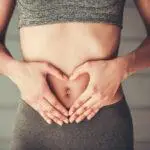Introduction
Gallstones are solid deposits that form in the gallbladder, a small organ located beneath the liver. These stones can cause severe pain and discomfort, often requiring surgical removal. However, advancements in medical technology have led to the development of non-surgical methods for the removal of gallbladder stones. In this article, we will explore some effective techniques that allow the removal of gallbladder stones without the need for surgery.
Understanding Gallbladder Stones
Gallstones are crystalline formations that can vary in size, ranging from tiny grains to larger stones. They develop in the gallbladder when bile, a digestive fluid, contains too much cholesterol or bilirubin. These substances can harden and form stones over time. Gallstones can cause excruciating pain, jaundice, nausea, and digestive issues.
Approaches For The Removal Of Gallbladder Stones Without Surgery
Oral Dissolution Therapy
Oral dissolution therapy involves taking medications that help dissolve gallstones over a period of months or even years. These medications contain bile acids that help break down the stones into smaller pieces, allowing them to pass through the bile ducts more easily. This approach is suitable for patients with small cholesterol stones and a functioning gallbladder.
Shock Wave Lithotripsy (SWL)
Shock wave lithotripsy is a non-invasive procedure that uses sound waves to break gallstones into smaller fragments. These fragments can then be eliminated through the digestive system. During the procedure, the patient lies on a table, and a device delivers shock waves to the targeted area. SWL is effective for smaller stones, and multiple sessions may be required for complete stone removal.
Contact Dissolution Therapy
Contact dissolution therapy involves directly injecting medications into the gallbladder to dissolve the stones. This approach is typically used for patients who cannot undergo surgery and have smaller gallstones. The medication is introduced through a catheter, and over time, the stones gradually dissolve. Close monitoring is required during this treatment to ensure its effectiveness and safety.
Risk factors for developing gallstones

[su_list icon=”icon: star” icon_color=”#172a85″]
- Hormone Replacement Therapy (HRT) and Birth Control Pills: Estrogens have the tendency to increase cholesterol levels in bile while simultaneously reducing the contracting movement of the gallbladder.Certain Cholesterol-Lowering Drugs: It is important to note that not all cholesterol-lowering drugs, particularly statins, are associated with an increased risk of gallstone formation. Some evidence suggests that statin treatment might actually lower the risk, but further research is required for conclusive results. Therefore, starting a statin solely for this purpose is not recommended.
Gender (Female): Women, especially during their reproductive years, produce significant amounts of estrogen. Consequently, they are more than three times as likely as men to develop gallbladder disease. By the time women reach the age of 60, approximately 20 percent of them will have gallstones.
Obesity: Excess body weight, particularly abdominal obesity, leads to elevated cholesterol levels in the bile. When cholesterol concentrations are higher, the likelihood of gallstone formation increases.
Pregnancy: The increased estrogen levels during pregnancy, similar to HRT or birth control pills, can raise cholesterol levels in the bile while reducing the gallbladder’s activity.
Weight Loss, Particularly Rapid Weight Loss: Insufficient fat intake allows bile to remain in the gallbladder for extended periods, which promotes the formation of gallstones. We will delve into this risk in more detail.
[/su_list]
[su_note note_color=”#f1d78f”]
How gallstones form during weight loss.
When you consume a meal that contains fat, the fat travels through the stomach and enters the small intestine. The gallbladder, filled with bile, receives a signal indicating the presence of fat and contracts. It releases its contents through the duct into the small intestine, where the bile combines with the fat-rich food and initiates the process of emulsification and breakdown. The liver produces more bile, sending it to the gallbladder for storage until the next fatty meal.
However, if the diet is low in fat, complications can arise. In this case, the gallbladder doesn’t contract as frequently, and the bile inside becomes more concentrated. If the gallbladder isn’t regularly emptied, cholesterol can become supersaturated, leading to the formation of gallstones. These stones can either remain in the gallbladder, causing irritation, or move down the duct. If a stone becomes lodged in the duct, it typically results in severe pain and requires surgical intervention.
Based on the information presented so far, it becomes evident that maintaining a continuous flow of fat through the gastrointestinal (GI) tract ensures regular contraction of the gallbladder and prevents the bile from becoming supersaturated with cholesterol. By avoiding supersaturation, the formation of gallstones can be minimized.
Which type of diet facilitates the movement of fat through the GI tract? Clearly, it is not a low-fat diet. However, a low-carb diet is effective in promoting the continuous flow of fat through the GI tract throughout the day. This constant movement helps empty the gallbladder and significantly reduces the likelihood of stone formation.
[/su_note]
Low-carb versus low-fat and gallstone formation.
Approximately 15 years ago, I conducted a study alongside a medical doctor (MD) on a weight loss maintenance drug called orlistat (Xenical, now Alli). We recruited a substantial number of subjects and subjected them to comprehensive physical examinations and an extensive battery of tests. Those who passed the initial screening were enrolled in a rigorous study protocol.
Here’s how the study was designed:
The pharmaceutical company required all subjects to adhere to low-fat, calorie-restricted diets for six months. If the subjects achieved a weight loss of at least four percent of their body weight within the six-month period, they were then randomly assigned to receive one of three doses of orlistat or a placebo.
The majority of the recruited subjects weighed around 200 pounds, meaning they had to lose a minimum of eight pounds (four percent of body weight) during the six months of following the low-fat, calorie-restricted diet. It was astounding for both the MD and me to witness how many patients struggled to achieve even this modest weight loss on a low-fat diet, leading to their exclusion from the study.
Another surprising finding was the significant number of subjects who developed gallstones during the six-month period. As part of the extensive testing conducted prior to the study, each subject underwent a gallbladder ultrasound to determine the presence of gallstones. Any individuals found to have gallstones were excluded from the study. Thus, we began the study with a large group of subjects who were initially free from gallstones, placed them on the low-fat, calorie-restricted diet, and monitored them for six months. Those who successfully achieved the required four percent weight loss underwent further testing, including another gallbladder ultrasound.
To our astonishment, a considerable percentage (around 15 percent) of these subjects, who were confirmed to be gallstone-free at the study’s commencement, developed gallstones within the six-month period.
This illustrates the potential consequences of following a low-fat diet. I have personally witnessed this phenomenon. Over the years, while treating numerous obese patients with low-carb diets alongside MD, we have never encountered a case of gallbladder disease. I often speculated whether our patients had gallstones but remained asymptomatic. Interestingly, a recent study, currently in press, supports the notion that individuals who lose weight on higher fat diets do not develop gallstones. Therefore, I feel more confident in asserting that our low-carb, high-fat dieting patients likely did not experience gallstone formation.
[su_note note_color=”#f1d78f”]
Ursodiol and high-fat diets prevent gallstones during weight loss
A forthcoming paper to be published in Clinical Gastroenterology and Hepatology titled “Ursodeoxycholic Acid and High-fat Diets Prevent Gallbladder Stones During Weight Loss: a Meta-analysis of Randomized Controlled Trials” examines various strategies to prevent gallstone formation in adults undergoing weight loss.
Given that rapid weight loss is a well-known risk factor for developing gallstones, the authors of the paper conducted a search for weight-loss studies where participants were assessed for gallstones both before and after the trial. The aim was to investigate whether taking ursodeoxycholic acid (ursodiol or UDCA), available under multiple trade names, could prevent gallstone formation in diets involving rapid weight loss.
(An earlier form of UDCA was a medication mentioned by a medical professional in the past for dissolving gallstones. The Wikipedia article provides a comprehensive explanation of how ursodiol works.)
The researchers identified eight studies that compared subjects on low-fat, low-calorie diets with others on the same diet supplemented with the gallstone-dissolving drug. Additionally, they found five studies that examined subjects who had recently undergone gastric bypass surgery, another risk factor for gallstone formation. In some cases, surgeons remove the gallbladder during bypass surgery to prevent stone formation. Half of the subjects in these five studies took UDCA post-surgery, while the other half did not.
Furthermore, the authors discovered two additional studies that compared gallstone formation in subjects on low-fat, low-calorie diets versus those on higher-fat, low-calorie diets. Both diets contained the same number of calories, differing only in fat content.
What were the findings?
In both the low-fat diet group and the post-gastric bypass group, subjects who took UDCA experienced significantly fewer gallstone formations compared to those who did not take the drug. The effect was slightly smaller in the post-gastric bypass group but remained statistically significant.
Our meta-analysis indicated that the observed effect seemed to vary based on the weight loss method, with post-bariatric surgery patients showing a smaller benefit compared to those on diet alone. UDCA decreased gallstone incidence from 19% to 3% in the diet-alone trials and from 28% to 9% in the post-bariatric surgery trials.
What about the subjects on higher-fat, low-calorie diets versus those on low-fat diets?
Subjects randomized to the high-fat arm of the study demonstrated remarkable outcomes. While 45% of subjects on the low-fat diet developed gallstones, none of the subjects on the higher-fat, low-calorie diet developed stones.
The key takeaway from this study is to ensure an adequate intake of dietary fat if you embark on a low-calorie, weight-loss diet. Alternatively, consider following a low-carb diet, as it inherently promotes a higher fat intake. The goal is to ensure regular contraction of the gallbladder, preventing the accumulation of cholesterol-rich bile and subsequent stone formation.
Lifestyle Changes to Prevent Gallstone Formation
Apart from non-surgical methods, certain lifestyle changes can help prevent the formation of gallstones. These include:
- Maintaining a healthy weight: Obesity is a risk factor for gallstone formation. Losing excess weight can reduce the likelihood of developing gallstones.
- Eating a balanced diet: Consuming a diet rich in fruits, vegetables, whole grains, and lean proteins can help prevent gallstone formation.
- Exercising regularly: Regular physical activity promotes healthy digestion and can reduce the risk of gallstone formation.
- Avoiding rapid weight loss: Crash diets or rapid weight loss can increase the risk of gallstone formation. Gradual weight loss is recommended.
One other message is that by taking UDCA, you can dissolve your gallstones without having to worry about them reforming if you make sure to eat enough fat to keep your gallbladder emptying.
Caveat: Those with known gallstones need to watch fat intake at first until the stones are dissolved. Most people with gallstone problems are aware of how much fat they can get away with eating. I wouldn’t push it much beyond that until the gallstones are gone. Then increase fat intake to keep the gallbladder contracting and new stones from forming.
Back in my surgery days, we did laparotomies (open abdominal surgery) to remove the gallbladder. Today, it’s typically done laparoscopically, which is a much more benign procedure. But still not without risk, especially since a general anesthetic is required. I don’t have gallstones, but if I did, I would do whatever I could to avoid any kind of surgical treatment, so if I were given the option to dissolve my gallstones, I would certainly take it.
I wish I had had this information available when I took care the poor lady discussed at the start of this post. She likely could have avoided the surgery and all the angst that went along with it.
If any readers have had experience with UDCA, I would love to hear about it in the comments. One last item. I’m posting this at about 11:30 my time and boarding a plane tomorrow morning at 5 AM. So, I probably won’t get comments posted until about midday tomorrow when I have a layover.
– See more at: http://healthmojo.org/2016/01/18/how-to-get-rid-of-gallstones-without-surgery/#sthash.32uAGKMd.dpuf
[/su_note]
Conclusion
While surgical removal of gallbladder stones is common, removal of gallbladder stones without surgery approaches can offer effective alternatives for certain patients. Oral dissolution therapy, shock wave lithotripsy, and contact dissolution therapy are all viable options for removing gallbladder stones without the need for surgery. However, the suitability of these methods depends on factors such as stone size, composition, and the patient’s overall health. Adopting a healthy lifestyle can also help prevent gallstone formation. Always consult with a medical professional for an accurate diagnosis and personalized treatment plan.
FAQs (Frequently Asked Questions)
- Can all gallstones be removed without surgery?
- Not all gallstones can be removed without surgery. The suitability of non-surgical methods depends on factors such as stone size, composition, and overall health.
- How long does oral dissolution therapy take to dissolve gallstones?
- Oral dissolution therapy may take several months or even years to dissolve gallstones completely. It is a gradual process.
- Are there any side effects of shock wave lithotripsy?
- Some patients may experience mild side effects such as bruising, discomfort, or blood in the urine after shock wave lithotripsy. These effects are generally temporary


